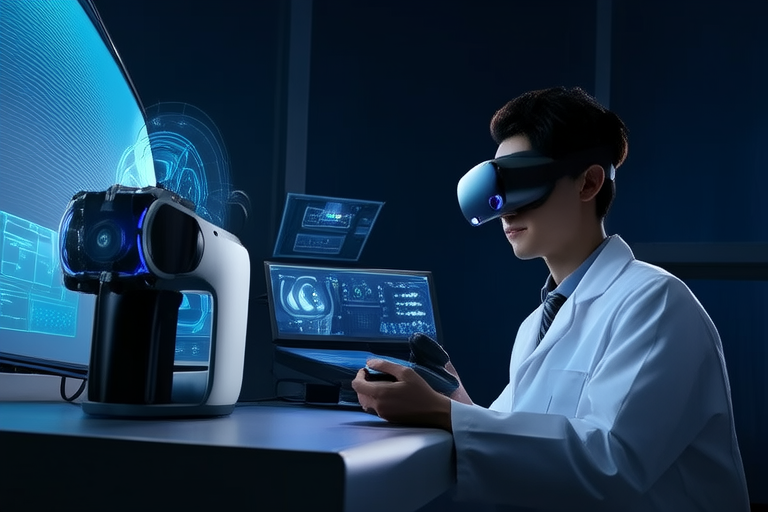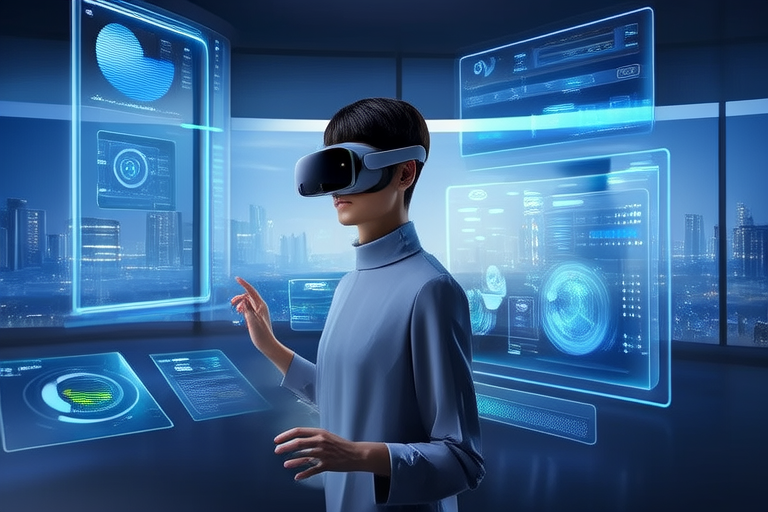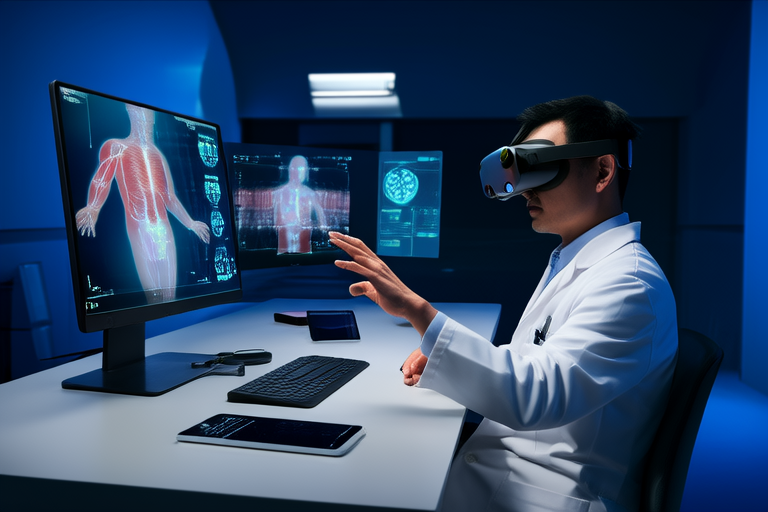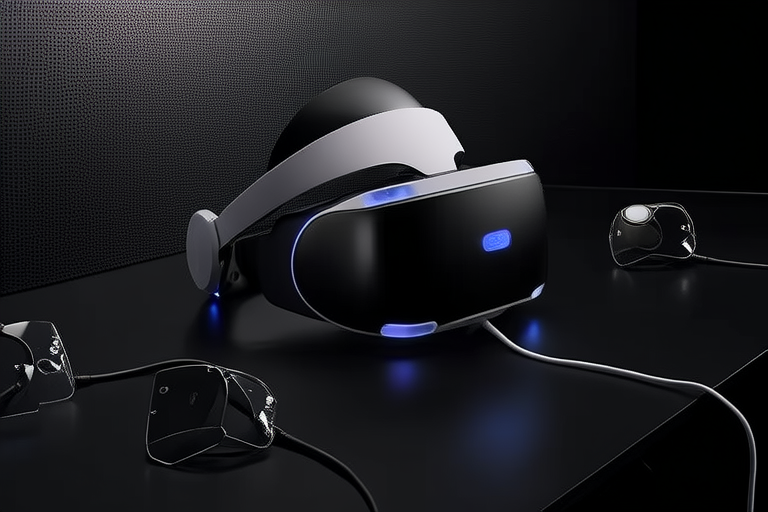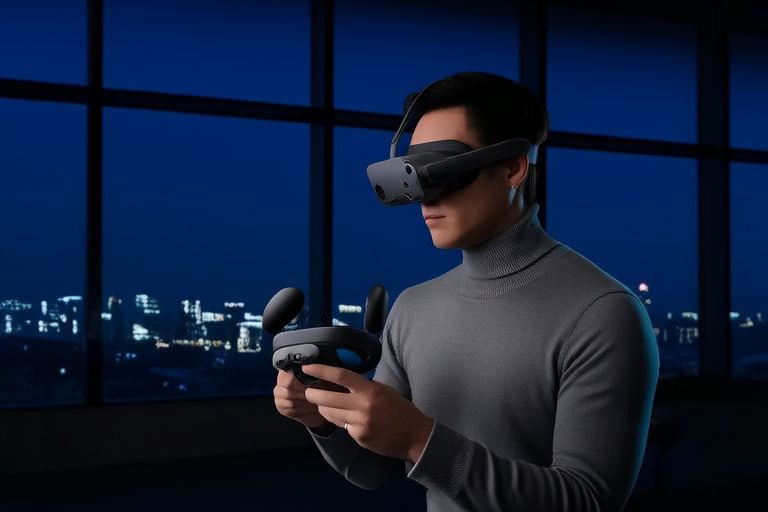“`html
Enhancing User Experience: The Role of VR and AR in Modern Technology
Introduction
Virtual Reality (VR) and Augmented Reality (AR) have emerged as transformative technologies, reshaping the way we interact with digital environments and physical spaces. VR immerses users in entirely computer-generated worlds, while AR overlays digital information onto the real world, enhancing our perception and interaction with it. These technologies are increasingly pivotal in modern applications, from entertainment and education to healthcare and manufacturing. By providing immersive and interactive experiences, VR and AR are revolutionizing user experiences across various industries.
Understanding VR and AR
Virtual Reality (VR)
Virtual Reality is a technology that creates a completely immersive digital environment. Users wear specialized headsets that block out the real world and replace it with a simulated one. This technology is widely used in gaming, where players can fully immerse themselves in virtual worlds. For example, games like Half-Life: Alyx offer an unparalleled level of immersion, allowing players to navigate through complex environments and interact with objects in a highly realistic manner.
Augmented Reality (AR)
Augmented Reality, on the other hand, enhances the real world by overlaying digital information or objects onto the user’s view. AR applications are commonly found in smartphones and tablets, where users can point their devices at the world around them and see additional layers of information. Popular AR applications include Pokemon Go, which overlays virtual creatures onto the real world, and Google Lens, which provides real-time translations and information about objects.
Differences Between VR and AR
The primary difference between VR and AR lies in their approach to creating immersive experiences. While VR replaces the real world with a virtual one, AR enhances the real world by adding digital elements. VR requires users to wear headsets, whereas AR can be experienced through smartphones, tablets, or smart glasses. Both technologies offer unique advantages, depending on the specific use case and desired outcome.
Applications of VR and AR
Entertainment
In the realm of entertainment, VR and AR are revolutionizing gaming and movie experiences. Gaming companies are leveraging VR to create fully immersive worlds where players can explore, interact, and compete in ways previously unimaginable. Similarly, AR is being used to enhance traditional video games, offering players new ways to engage with their surroundings. In the film industry, AR is being used to create interactive movie experiences, allowing viewers to explore behind-the-scenes content and engage with characters in new and exciting ways.
Education
VR and AR are also transforming education, offering students immersive and interactive learning experiences. Virtual classrooms allow students to participate in lessons from anywhere in the world, while AR applications provide interactive learning tools that make complex concepts easier to understand. For example, medical students can use VR to practice surgeries in a safe and controlled environment, while history students can explore historical events through AR-enhanced textbooks.
Healthcare
The healthcare sector is benefiting greatly from VR and AR, particularly in areas such as surgical simulations and patient therapy. Surgeons can use VR to practice complex procedures before performing them on patients, reducing the risk of errors and improving outcomes. AR is being used to assist surgeons during operations, providing real-time information and guidance. Additionally, VR is being used to treat mental health conditions, such as anxiety and PTSD, by exposing patients to controlled virtual environments that help them manage their symptoms.
Retail
VR and AR are also making waves in the retail industry, offering customers new ways to shop and interact with products. Virtual try-ons allow customers to see how clothing and accessories look on them without having to physically try them on. Immersive shopping experiences, such as those offered by IKEA, allow customers to visualize furniture in their homes before making a purchase. AR is also being used to enhance in-store experiences, providing customers with additional product information and recommendations.
Manufacturing and Engineering
In manufacturing and engineering, VR and AR are being used to improve design visualization and remote collaboration. Engineers can use VR to visualize and test designs in a virtual environment, identifying potential issues before production begins. AR is being used to assist workers on the factory floor, providing real-time instructions and guidance. This technology is also being used to facilitate remote collaboration, allowing engineers and designers to work together on projects from different locations.
Benefits of VR and AR for User Experience
Enhanced Engagement and Interactivity
One of the most significant benefits of VR and AR is their ability to enhance engagement and interactivity. These technologies provide users with immersive experiences that are far more engaging than traditional methods. Whether it’s exploring a virtual world or interacting with digital objects in the real world, VR and AR offer users a level of engagement that is unmatched by other technologies.
Improved Accessibility and Inclusivity
VR and AR are also improving accessibility and inclusivity, offering users new ways to access and interact with digital content. For example, VR can be used to provide visually impaired users with haptic feedback, allowing them to “see” objects through touch. AR can be used to provide real-time translations and subtitles, making content more accessible to non-native speakers. These technologies are also being used to create more inclusive environments, allowing users with disabilities to participate in activities that were previously inaccessible.
Personalized Experiences
Another benefit of VR and AR is their potential for personalized experiences. These technologies can be used to create custom environments and interactions tailored to individual users’ preferences and needs. For example, VR can be used to create personalized training programs for employees, while AR can be used to provide personalized recommendations to shoppers. This level of personalization can lead to higher levels of satisfaction and engagement, as users feel more connected to the content and experiences they are interacting with.
Emotional and Psychological Benefits
Finally, VR and AR offer a range of emotional and psychological benefits for users. These technologies can be used to reduce stress and anxiety, promote relaxation, and enhance mood. For example, VR can be used to create calming environments that help users relax and de-stress. AR can be used to provide positive reinforcement and encouragement, helping users stay motivated and engaged. These benefits can have a profound impact on users’ overall well-being, making VR and AR valuable tools for promoting mental and emotional health.
Challenges and Future Prospects
Current Challenges
Despite their many benefits, VR and AR face several challenges in terms of implementation and adoption. One of the main challenges is the cost of hardware and software, which can be prohibitive for many users and organizations. Additionally, there are concerns about the accuracy and reliability of these technologies, particularly in areas such as healthcare and manufacturing. Another challenge is the need for standardized protocols and guidelines to ensure the safe and effective use of VR and AR.
Ongoing Research and Innovations
Researchers and developers are working tirelessly to address these challenges and push the boundaries of what is possible with VR and AR. Ongoing research is focused on improving the accuracy and reliability of these technologies, as well as developing new applications and use cases. Innovations in areas such as haptic feedback, eye tracking, and gesture recognition are opening up new possibilities for VR and AR, making these technologies more accessible and engaging than ever before.
Future Trends and Advancements
The future of VR and AR looks bright, with many exciting trends and advancements on the horizon. As technology continues to evolve, we can expect to see more sophisticated and realistic simulations, as well as more seamless integration with other technologies. The rise of 5G networks is expected to play a key role in enabling more immersive and responsive VR and AR experiences. Additionally, we can expect to see more widespread adoption of these technologies across industries, as organizations recognize their potential to enhance user experiences and drive innovation.
Ethical Considerations and Societal Impacts
As VR and AR become more prevalent, it is important to consider the ethical implications and societal impacts of these technologies. Issues such as privacy, data security, and the potential for addiction must be addressed to ensure the responsible use of VR and AR. Additionally, there are concerns about the potential for these technologies to exacerbate social isolation and disconnection. It is important to strike a balance between the benefits and risks of VR and AR, ensuring that these technologies are used in ways that promote positive outcomes for individuals and society as a whole.
Conclusion
In conclusion, VR and AR are powerful technologies that are transforming user experiences across a wide range of industries. From entertainment and education to healthcare and retail, these technologies are offering new ways to engage, learn, and interact with the world around us. While there are challenges to overcome, the potential benefits of VR and AR are vast, and ongoing research and innovation are paving the way for even greater advancements in the future. As we continue to explore the possibilities of these technologies, it is important to consider the ethical implications and societal impacts, ensuring that VR and AR are used in ways that promote positive outcomes for all.
“`
